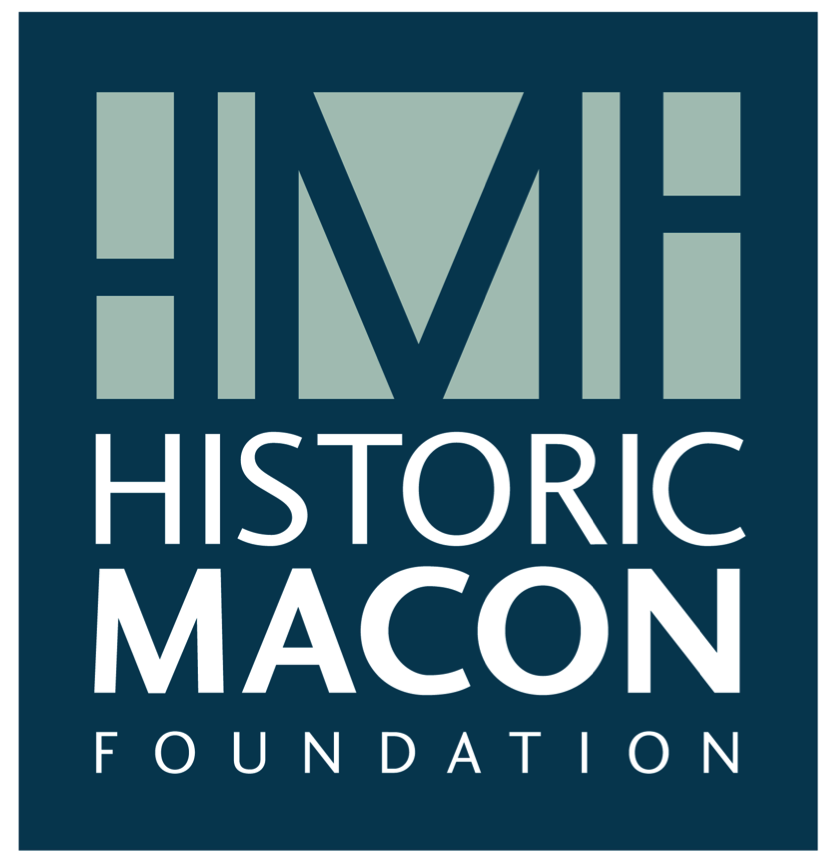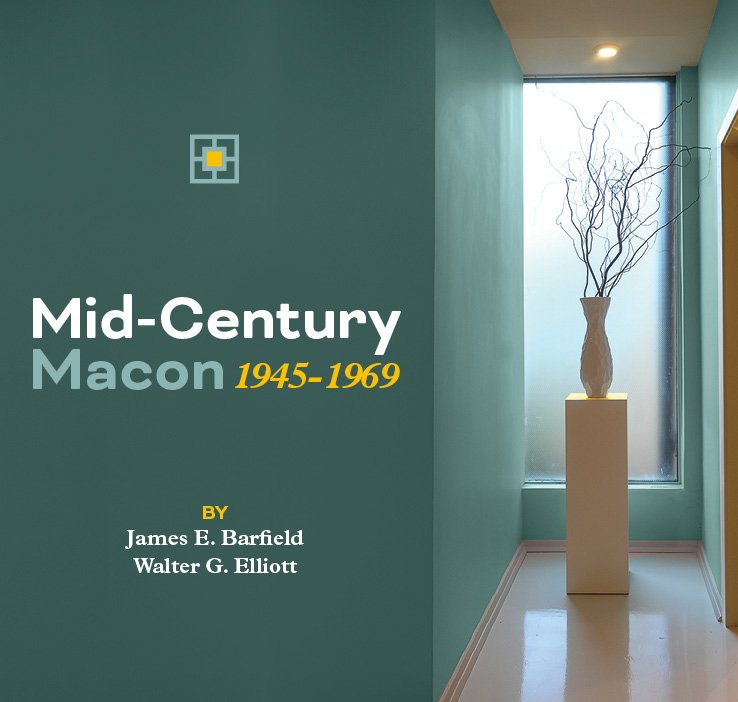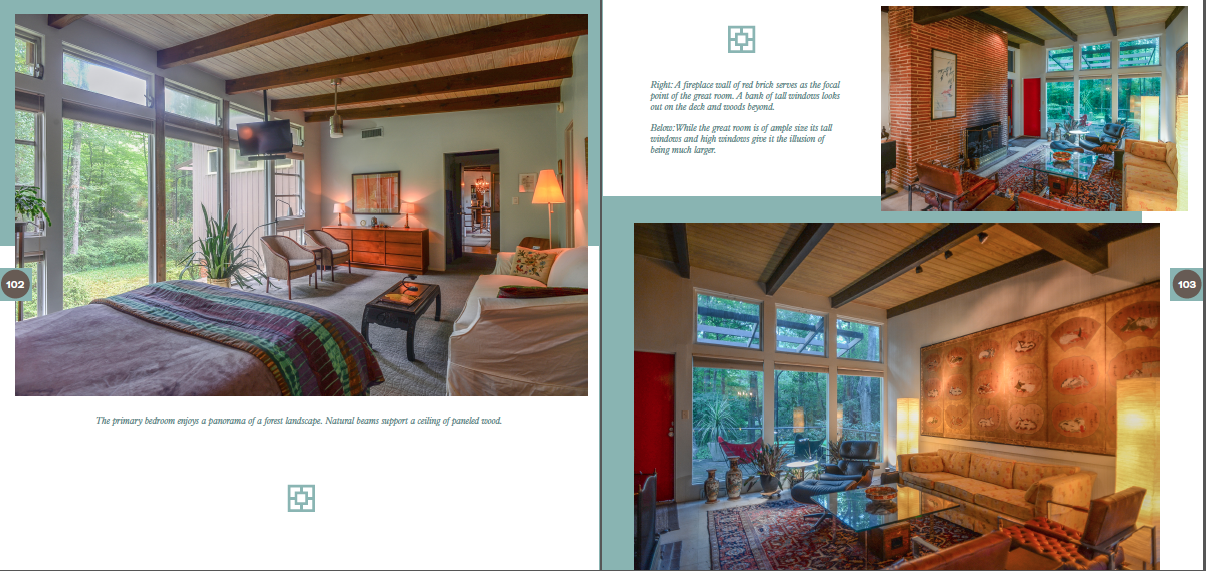Jim Barfield and Walter Elliott know many of Macon’s streets better than the post office.
They know the history of homes on those streets. Who designed them. Who lives there. Who used to live there.
They’ve channeled much of that knowledge into their latest book, “Mid-Century Macon 1945-1969,” which celebrates the mid-century modern architecture found all across town. It is due out in early 2022.
“Architecture is the most accessible form of art,” Barfield said. “When you walk down the street or drive down the street, you see a work of art, and just like other art, there’s good and there’s bad and there’s indifferent. But architecture is an art. Each architect is an artist, creating something. It’s a statement.”
The book — their third together — was years in the making. As they mention in the preface, two friends “gave them the hard sell” more than a decade ago and asked them to consider a book on Macon’s “contemporary” buildings of the 1940s, ’50s and ’60s. The country was in the grips of the Great Recession at the time, though, and neither one felt the time was right.
Now, there’s a huge interest in all things mid-century modern. But there’s also a lack of knowledge about the style, which features simplicity and integration with nature (think Frank Lloyd Wright), with clean lines, exposed beams and large windows, among other characteristics.
“You’ve got a whole new generation of young people here that it’s all pretty new to, and they are red hot on this design,” Elliott said. “We wanted to reach out to this young generation and make them aware ... of what our community has to offer. So we hope this book will show the richness (of the style) that we’ve got here.”
In America, it sprang to life after World War II. When GIs returned home, the country was ablaze with energy on every front, and architects found a liberating outlet in the mid-century modern style.
The book, in fact, is dedicated to architects “who contributed to Macon’s wealth of fine architecture.”
Ellamae Ellis League
“Macon has always been blessed with great architects,” Barfield said. “We were very fortunate that those people, after World War II, such as Ellamae Ellis League, she was willing to adapt and learn and change her style. A lot of that was due to her daughter, Jean, who had gone to Radcliffe and learned at Harvard from the masters of modern architecture.”
In time they found kindred architectural colleagues in Macon who embraced the adventurous style and were willing to move in a new direction, including Billy Webb, Jack Holliday, John Dennis, and the Dunwody brothers, Elliott and Gene, among plenty of others.
“The two stars were undoubtedly Jack Holliday and Billy Webb — Bernard Webb,” Barfield said. “They just did amazing things. I saw things that they had accomplished and the creative ideas that they incorporated. It extended my respect and admiration for these people.”
They were talented, and they were flexible too.
“They seemed to jump at the opportunity to do something a little bit different and carry it forward, show their creativity,” Barfield said. “Each (concept) was a work of art. Each one was a new creation. They did so much, and we’re so lucky that … very few have been lost.”
Elliott knows the style firsthand. He was born and raised in Macon, but he moved away for jobs a couple of times. He returned 20 years ago and began an architectural photography business (“It was a missed career. I should have been an architect.”)
He remembers when he was 4 years old and rode past the Old Holton Road house he now lives in. He turned to his mother and said: “Mom, look at that house. Isn’t that a neat house?
She didn’t care for it. “It’s too moderne,” said his mom, who told him she preferred a classical look.
When he got the chance to buy the house a few years ago, “It couldn’t have been a better fit,” Elliott said. “It was absolutely wonderful.”
And it’s a perfect example of the mid-century modern style. It’s nestled in the woods, with simple lines and lots of big windows.
A DUTY TO SHARE
For the book, they had a good idea of some homes they hoped to feature. They knew several owners. They cold-called others. They built lists and compared notes. Then they set about their mission, visiting the owners and scheduling the shoots — which usually took less than two hours.
“Walter is very conscious of the light,” said Barfield, who’s from Vidalia and remained in Macon after attending graduate school at Mercer. “He would know what time of day we needed to go so the light looks exactly right.”
If a site posed something of a challenge, Elliott shot during “the golden hour” — the window right at dusk before the sun sets. You’ll notice the stunning results in one particular photo of a lighted Hillandale Circle home, its pool in the foreground, as the sun throws orange against the sky.
“We knew a lot of the ones we wanted, and it was just a matter of convincing people to be included,” Barfield said. “Most of them were glad to be included.”
The book, available for purchase at historicmacon.org, includes 40 sites, and several of them are on Hillandale.
One of those homes belongs to Dr. Onajefe Nelson and her husband, Dr. Ayo Adeniyi.
She, too, hesitated to participate at first. “I’m a very private person,” she explained. But “everybody spoke so well of them,” so she agreed.
And she’s glad they did. She was thrilled with the finished product and came away with a new appreciation for her home — built in the late ’50s — thanks to the lighting touches and perspectives that Elliott incorporated.
Elliott “has a knack for getting the light just right,” she said, which helped accentuate the home’s beauty.
When he shoots, Elliott uses a tripod for stability and a full-size camera sensor, which yields great detail.
“And I make very free use of a wide-angle lens. I’ve got one that works real well without being too extreme.”
For Barfield’s part — the words — “A great deal of it is from the homeowners,” he said. “That’s my best source. And sometimes it’s from the previous homeowner. I don’t go to the library and research the dates and specific details like that very much. I’m trying to keep it on a more interesting level than just factual history.
“I try to include social history into it. The people who lived in the house are an important part. And the architects and their personalities — something about them. I interview people who knew Billy Web or Jack Holliday or Ellamae League. My process is very rewarding.”
They want readers to know that the homeowners who participated in the project feel a keen sense of stewardship — almost a duty — to share their home with others.
“These people are not showing off what they have,” Barfield said. “They feel they live in a structure that is a work of art, and they’re willing to share it with the public.”
They hope readers come away from the book with a better understanding of what mid-century architecture is — and an appreciation of the architects and their work.
“Macon is a treasure trove of good architecture — not just mid-century modern — but we were in the vanguard of that as well here,” Barfield said.
“We captured that time and the personality of those people in their houses. And I’m so glad of that. We’ve documented a little snapshot of the cultural history of Macon at a particular time.
“They won’t stay the same,” he said. “They're going to be changed. But we got ’em at this time.”








